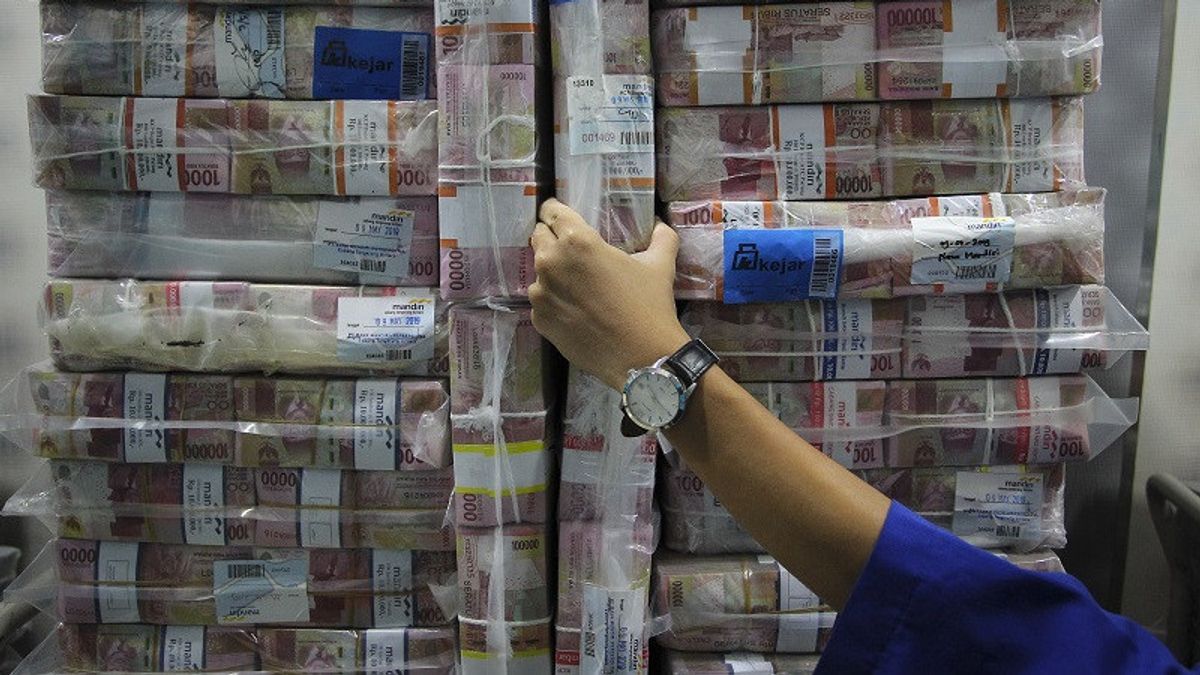JAKARTA - Minister of Finance (Menkeu) Sri Mulyani said that Indonesia's debt cost burden in 2023 will be higher than it is today.
He expressed this when representing the government in conveying the views of the 2023 State Budget Draft (RAPBN) which was compiled with the House of Representatives (DPR).
According to the Minister of Finance, one of the strong triggering factors for the projection is external factors originating from developed countries, particularly the United States.
"Monetary authorities in various countries have begun to take steps to tighten monetary policy which tends to be aggressive, especially in the United States (US)," he said at the Senayan Parliament Complex, Jakarta, Tuesday, May 31.
The Minister of Finance explained that several policy steps taken by the monetary authority in the US (The Fed) included the termination of quantitative easing followed by an increase in the benchmark interest rate, as well as a significant reduction in the balance sheet which has the potential to make global liquidity tighter.
The combination is believed to have pushed up the yield on US Treasury bonds and also had an effect on other developed countries.
"This has the potential to increase volatility in global financial markets, encourage capital outflows along with increased risks in developing countries, and make the cost of funds higher," he said.
Furthermore, the state treasurer explained that Uncle Sam's country would also adopt a strong dollar policy to tackle inflation in his country.
As a result, the combination of high-interest rates and a strong dollar will lead to tighter access to financing and an increase in the burden of debt services.
“By taking into account that the same policy related to interest rate adjustments and balance sheet reductions by the Fed which had previously been implemented in 2018 had a significant impact on the government's cost of funds, it is unavoidable that a potential increase in SBN yields will occur. This increase will have an impact on increasing the interest expense in the state budget," he explained.
VOI noted that the latest report from the Ministry of Finance stated that the government's debt at the close of April 2022 was IDR 7.040.32 trillion.
This figure consists of state securities (SBN) of IDR 6.228.90 trillion and loans of IDR 811.42 trillion.
"The government has consistently tried to suppress the increase in interest rates, to maintain the momentum of economic growth and reduce the cost of debt in the long term," continued the Minister of Finance.
SEE ALSO:
For information, the government in the 2022 period plans to pay debt interest of IDR 405.86 trillion or 20.87 percent of the total central government spending.
Of this value, IDR 393.6 trillion was used for interest payments on domestic debt and IDR 12.17 trillion was interest payments on foreign debts.
“Debt as a fiscal instrument is used to accelerate the achievement of development targets, while still being managed prudently and sustainably. Debt risk mitigation is carried out by maintaining the debt ratio within a controlled limit, issuing debt opportunistically, carefully, and continuing to deepen the market so that the cost of funds is more efficient to reduce the debt burden of the APBN in the future," concluded Minister of Finance Sri Mulyani.
The English, Chinese, Japanese, Arabic, and French versions are automatically generated by the AI. So there may still be inaccuracies in translating, please always see Indonesian as our main language. (system supported by DigitalSiber.id)
















